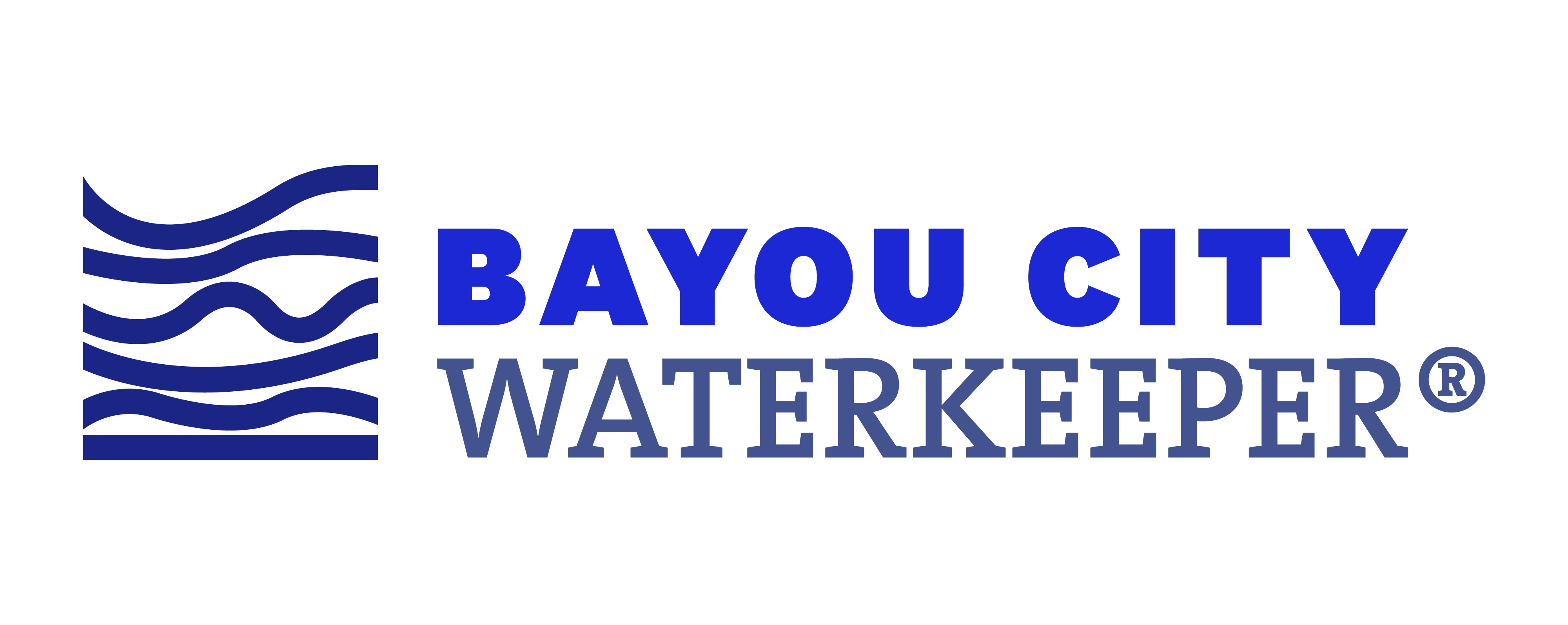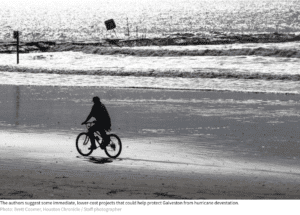This op-ed was published by the Houston Chronicle on Wednesday, 2 September 2020, featuring Jordan Macha, Executive Director for Bayou City Waterkeeper, and Bob Stokes, President for Galveston Bay Foundation. See original post here.
Opinion: Can’t wait for Ike Dike? We must act now to protect Galveston Bay. Here’s how.
Jordan Macha & Bob Stokes | September 2, 2020
In the days since Hurricane Laura made landfall on the Louisiana coast, multiple public officials have called for the construction of some type of coastal barrier to stop storm surge from entering Galveston Bay, expressing frustration that nothing has been done to protect our region since Hurricane Ike. But in fact, the process to begin construction of such a structure is ongoing and has been for many years.
The U.S. Army Corps of Engineers is nearing the end of a five-and-a-half-year study to determine the best method to protect the communities and industry residing along the Texas coast. The Coastal Texas Study includes projects from Brownsville to Orange, with its most expensive project centered on Galveston Bay. This time frame may seem lengthy, but it is warranted as the coastal barrier being contemplated will likely be the most complex and costly structure of its kind in the United States, if not the world. As the Army Corps finalizes its proposed solutions for our protection, it is critical we get it right. The Army Corps is scheduled to issue a final plan by March 2021, after conducting a final public review for its revised Feasibility Report and Environmental Impact Statement in October of this year.
The plan for Galveston Bay is likely to be broad and expensive, including a series of gates that will stretch the 2-mile length of Bolivar Roads, twin 14-feet high sand dunes across Galveston Island and Bolivar Peninsula, a ring barrier around Galveston’s city center and investments in ecosystem restoration. It is estimated that the completed structure will take two to five years to design and study, followed by another 10 to 15 years to construct. Assuming full funding, we could have a completed coastal barrier in 20 years.
However, the funding is not assured. The cost of Army Corps-sponsored projects are shared between the federal government and a local source of funding. Usually, the federal government will pay 75 percent and the local source will pay 25 percent. After the structure is completed, operation and maintenance are typically covered by the local source.
If the total project costs between $23 to $32 billion, the federal government might provide $17.25 to $24 billion, with the state of Texas, or another local entity, providing somewhere between $5.75 and $8 billion. After the structure is completed, a local entity will likely need to spend $100 million every year to simply operate and maintain the structure.
These are massive numbers. The need for a coastal barrier could arguably justify such numbers, but is it realistic to expect to receive this funding in a time of local and federal deficits? If we do get federal funding, where will the local match come from? Clearly it will require significant new taxes or fees. Will a taxpayer in Katy or Cypress who does not need to evacuate from a hurricane be willing to pay significant new taxes for a coastal storm barrier?
The Rice SSPEED Center has put forward a $5 to $7 billion storm surge proposal, called the Galveston Bay Park Plan. The plan relies on using dredge material from a future deepening and widening of the Houston Ship Channel to create new islands in Galveston Bay to help block storm surge. Port Houston is about to begin a deepening and widening project, but all the material from the project is already allocated to other uses. The port’s next deepening project that could provide a potential source of dredged material will likely not start until 2030 or later.
Where does this leave us in our here and now? Rather than waiting a decade or more for an expensive, “silver bullet” solution, there are actions we can take immediately. Although thousands of storage tanks have been identified as being at risk for flooding and contamination by the Rice SSPEED Center in a report issued three years ago, we need more in-depth study to determine if the risk can be mitigated with targeted industry-funded interventions. Some tanks are much riskier than others. Harris County Judge Lina Hidalgo should appoint a task force to oversee this effort immediately. There is no reason to allow a few facilities to present a large risk to the community while we pursue broader coastal protections.
Additionally, we should continue to invest in ecosystem restoration and non-structural projects that provide immediate and time-tested resiliency for Galveston Bay and its communities. Every living shoreline, restored wetland, restored oyster reef or preserved land serves as a buffer for storm surge. Elevating and securing homes and businesses protects our communities where they are now. We have existing restoration programs and funding sources that have already improved resiliency for our region, and modest new investments in those programs could make a big difference now and adapt to our needs in the future.
No coastal barrier will protect everyone from a hurricane. Nearly all the damage from Hurricane Laura resulted from high winds. Nearly all the damage from Hurricane Harvey resulted from massive rainfall. A coastal barrier would not have helped in either of those cases. As Texans living on the Gulf Coast, we will always have to live with the threat of hurricanes. However, we can focus on implementing multiple solutions now and not simply await an uncertain, down-the-road “silver bullet” solution to mitigate that risk.
Macha is executive director and waterkeeper with Bayou City Waterkeeper. Stokes is the president of the Galveston Bay Foundation.

